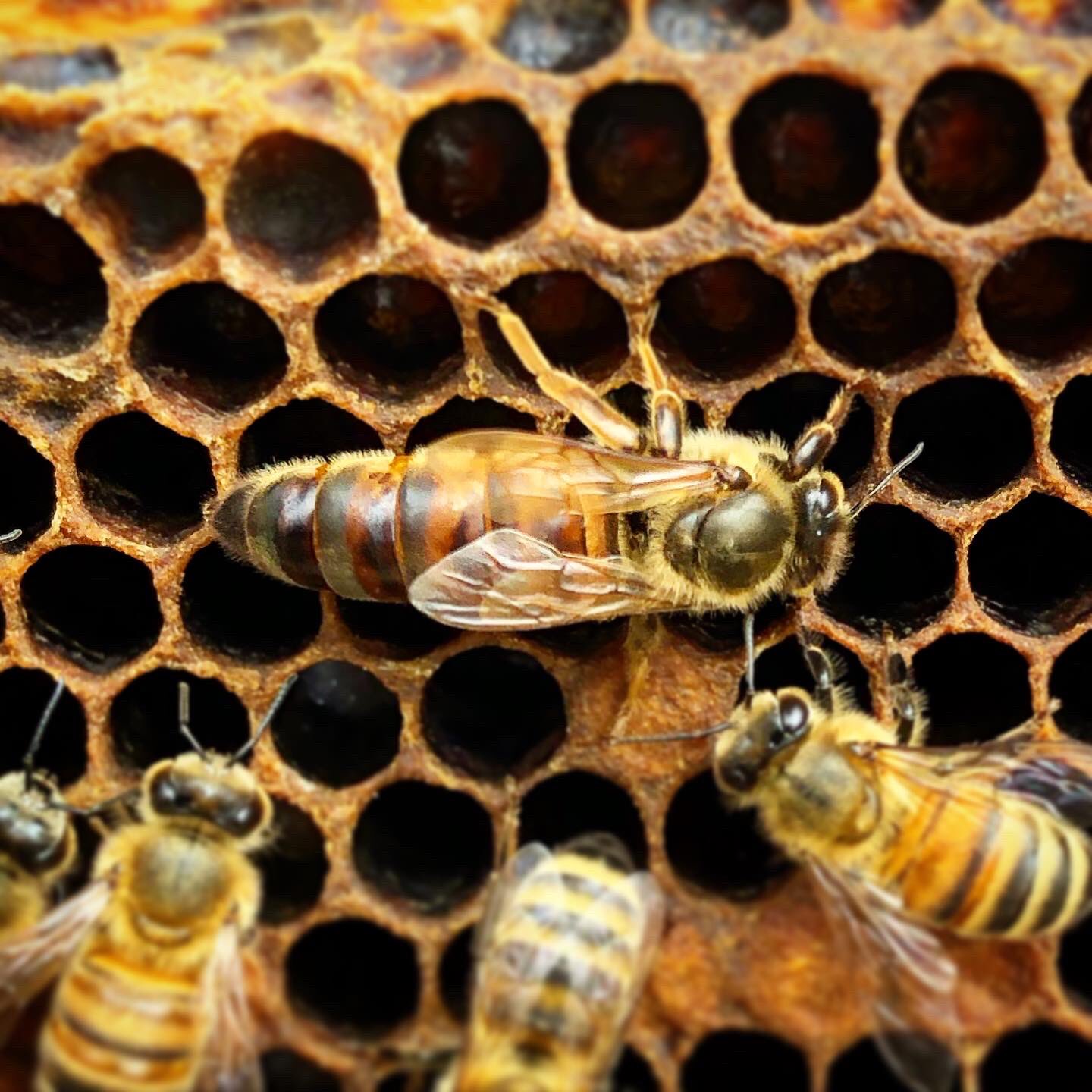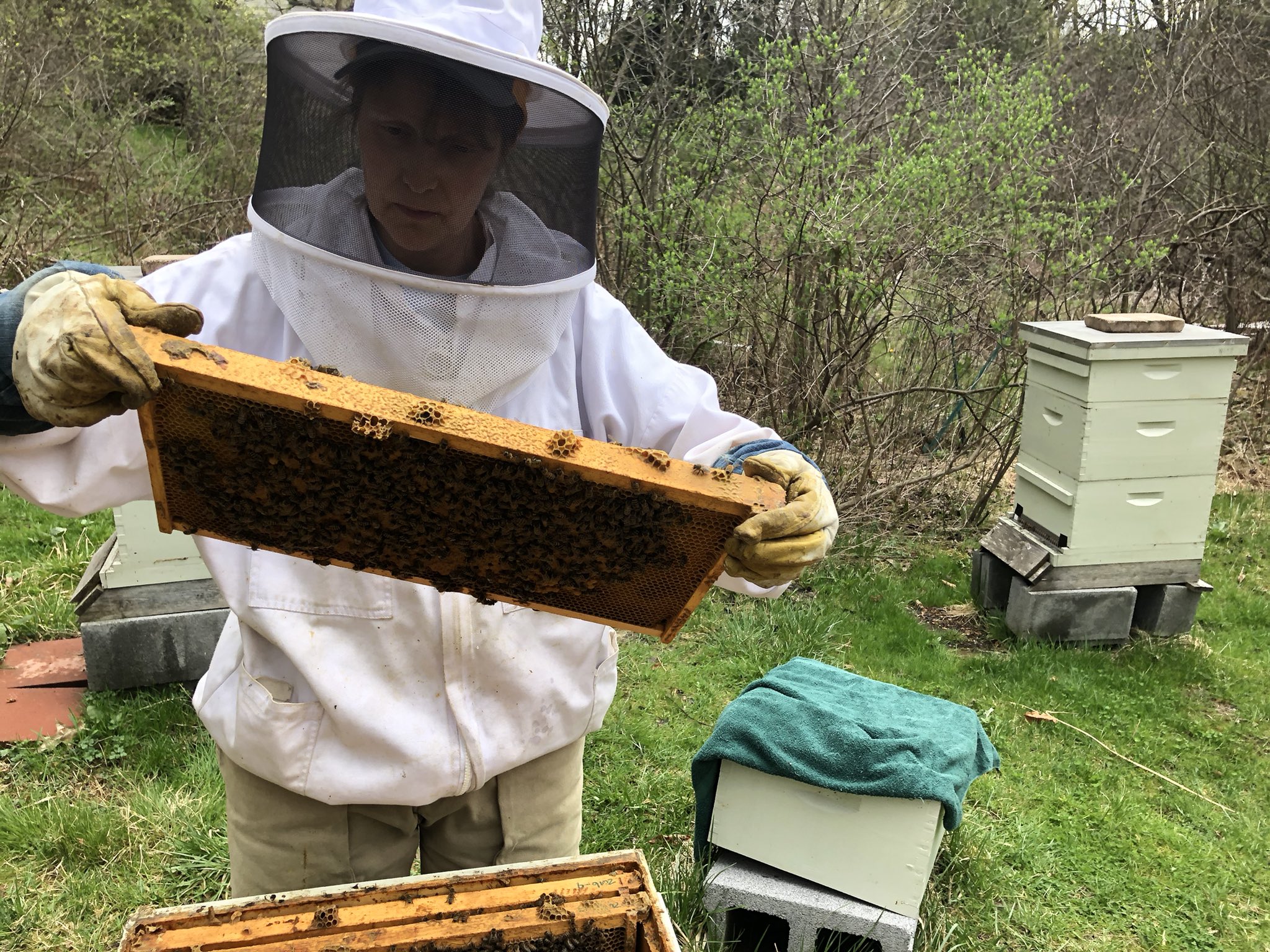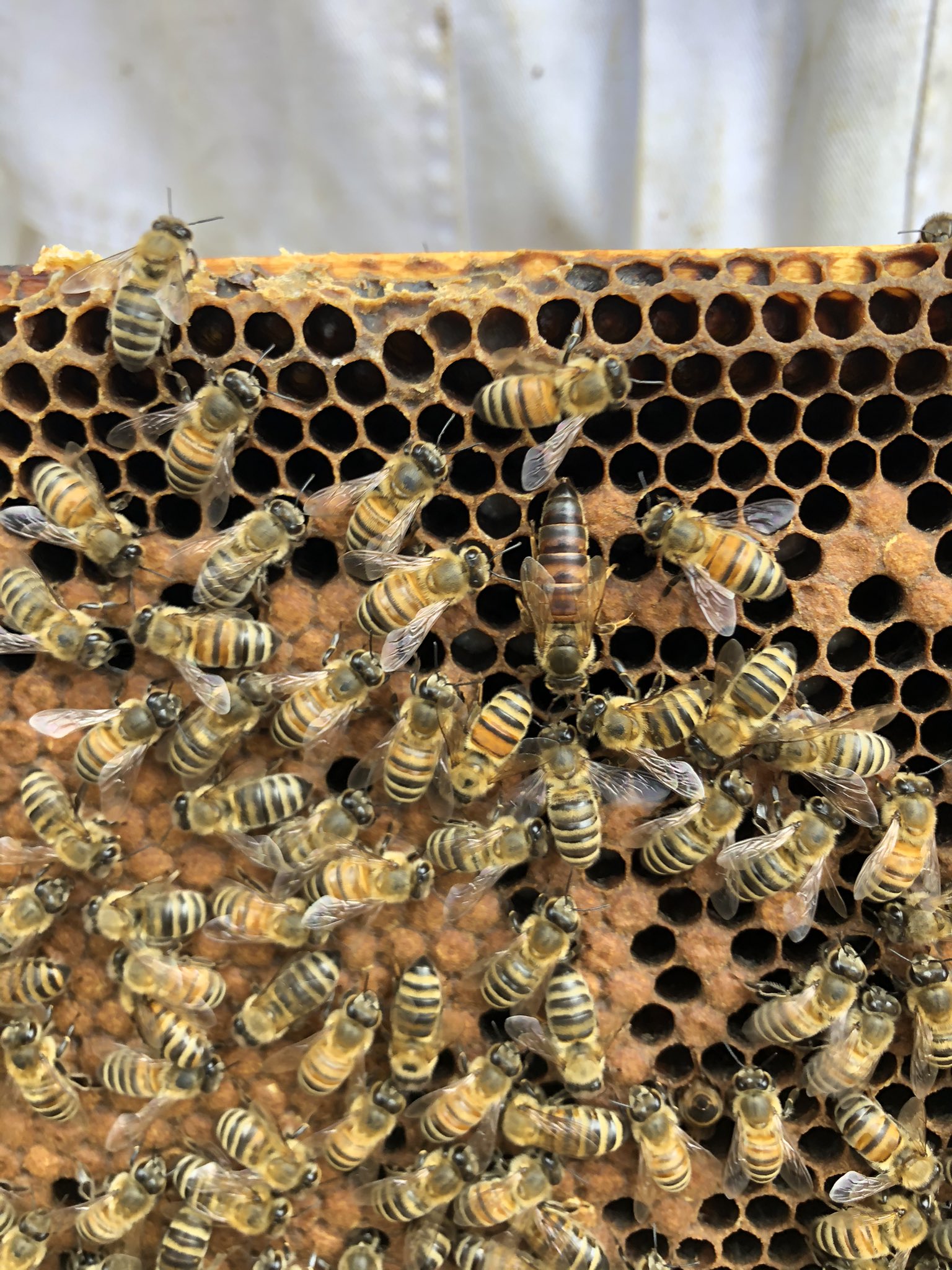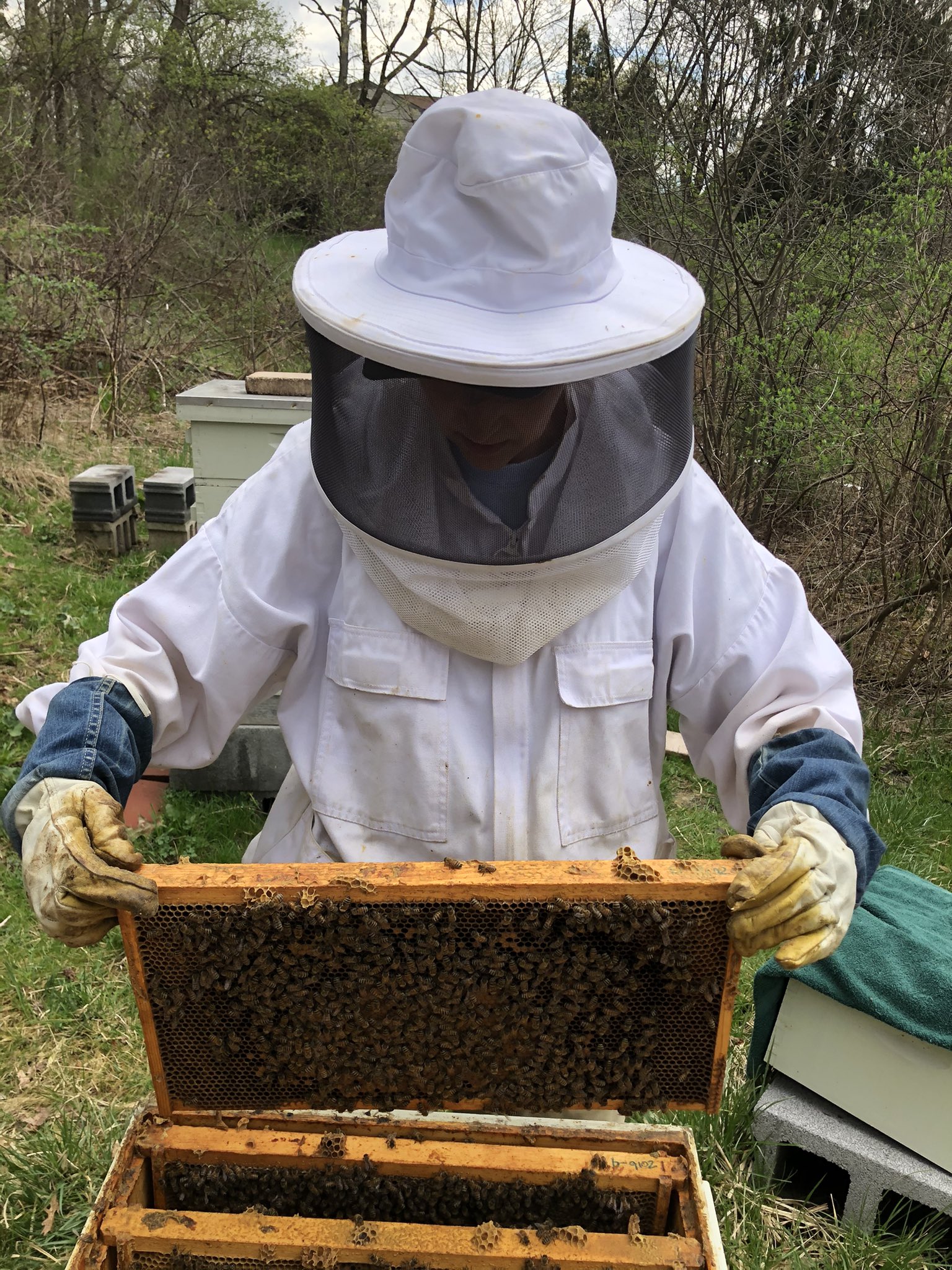Looks like we've officially made it through the last of winter. I've taken the snow tires off, bought gas for the lawnmower and the awning company should be out to shade our deck again any day now. For the bees, transitioning from winter to spring is arguably the hardest thing they ever do.
Why is it so hard?
The queen is the only bee whose lifespan is a year or more. EVERY OTHER BEE in the hive will die and be replaced, with the longest lived bees being the winter bees.
You can find lots of info online about the lifecycle of honeybees (here's a good article with lots of details), but the basic takeaway is that there two general terms of lifespan for the bees. The normal bees (which you see flying around all spring/summer/fall) live 2-6 weeks and are regularly replaced. The winter bees first appear in the fall and have fuzzier bodies and more fat -- yes, bees have variable body fat -- so that they can survive the winter and keep the hive temperature warm.
The winter bees live for 4-6 months. Think about that difference in lifespan... 2-6 weeks versus 4-6 months! Same basic worker bees... just a little fuzzier/fatter. The main reason is because the queen doesn't lay many (or any) eggs all winter long and while the bees don't hibernate, they also aren't very active when it is cold out. Mostly they sit in a tight cluster and shiver for warmth around the queen, so a winter bee's life is comparably less risky than a summer forager and they expend a less energy daily.
Even so, by the time warm weather rolls around, they are OLD. When the first warm days start appearing, the winter bees muster whatever vitality they have left and go out looking for pollen to feed the next generation with. Remember: pollen is baby bee food, nectar is adult bee food.
With pollen coming in, the queen bee starts laying eggs for the new bees. But new bees can take 3 weeks from the time they are laid until they hatch out. And even then, they are too soft and vulnerable to become foragers, and spend another 7+ days working in the hive.
If you consider that timing and factor it in with the weather and the possibility of a late cold snap/frost hitting a hive full of bee eggs/larvae that are especially prone to freezing, and the winter bees that are literally stumbling around on their last legs... and you realize that the entire population of that hive has to completely replace itself (and more) in just a few weeks-- a daunting task!
Many late winter/early spring hive deaths are due to a failure in some part of this population shift, which then results in a death of the queen and the colony.
As I wrote in a prior blog post, when we dewinterized the hives this year we thought winter was over. When a late season cold front blew through for a 3-4 day stretch, we were quite concerned that all the developing bees would be chilled and, in turn, cause a population gap that could collapse entire hives. We were especially concerned about the white nuc queen, which we'd relocated in to a hive that froze late last year.
This past weekend (the day after the Pittsburgh Car Bazaar), we took advantage of dry, sunny weather that wasn't too hot and spent the afternoon doing a deep inspection on all three hives.
The East and West hives (winter survivors) were really active and jammed full of bees already. Both hives-- especially the East-- were so full of bees it was hard at times to get our fingers around the frames! We did not see either of these queens, but we saw plenty of eggs and brood in all stages of development. They were full of well-laid up frames, which indicates that the next couple weeks will see the population explosion we're used to every spring... and the inevitable battle to prevent swarming! Both had new queen cups on the bottoms of their frames, but all were empty. We consider that a warning shot!
The (formerly) Purdue hive, where the white nuc queen was relocated to, had noticeably less bees-- as we would expect-- but the queen we spotted almost immediately as she made her rounds to catch up with her neighboring hives. We added a honey super and excluder to her hive so all the newly hatched bees could start cleaning up the wax when they hatch out.
None of the hives appeared to be storing significant amounts of nectar yet, but they also weren't consuming the leftover honey from winter. Best we can figure they're basically breaking even at this point, as we saw open nectar in all of them.
What they are stockpiling is massive amounts of pollen-- more than we recall being typical for this time of year. SO MUCH POLLEN.
Not sure when we'll next do a deep inspection, but probably within a week. During swarm season we're typically in the hives every 5 days to keep them settled down, but given the population boom and the first queen cups it is probably a wise approach to assume that swarm season is starting early this year.




No comments:
Post a Comment
Comments will be posted once approved by the page admin. For purchases - PLEASE EMAIL at DandelionApiary@Gmail.com - Thank you!